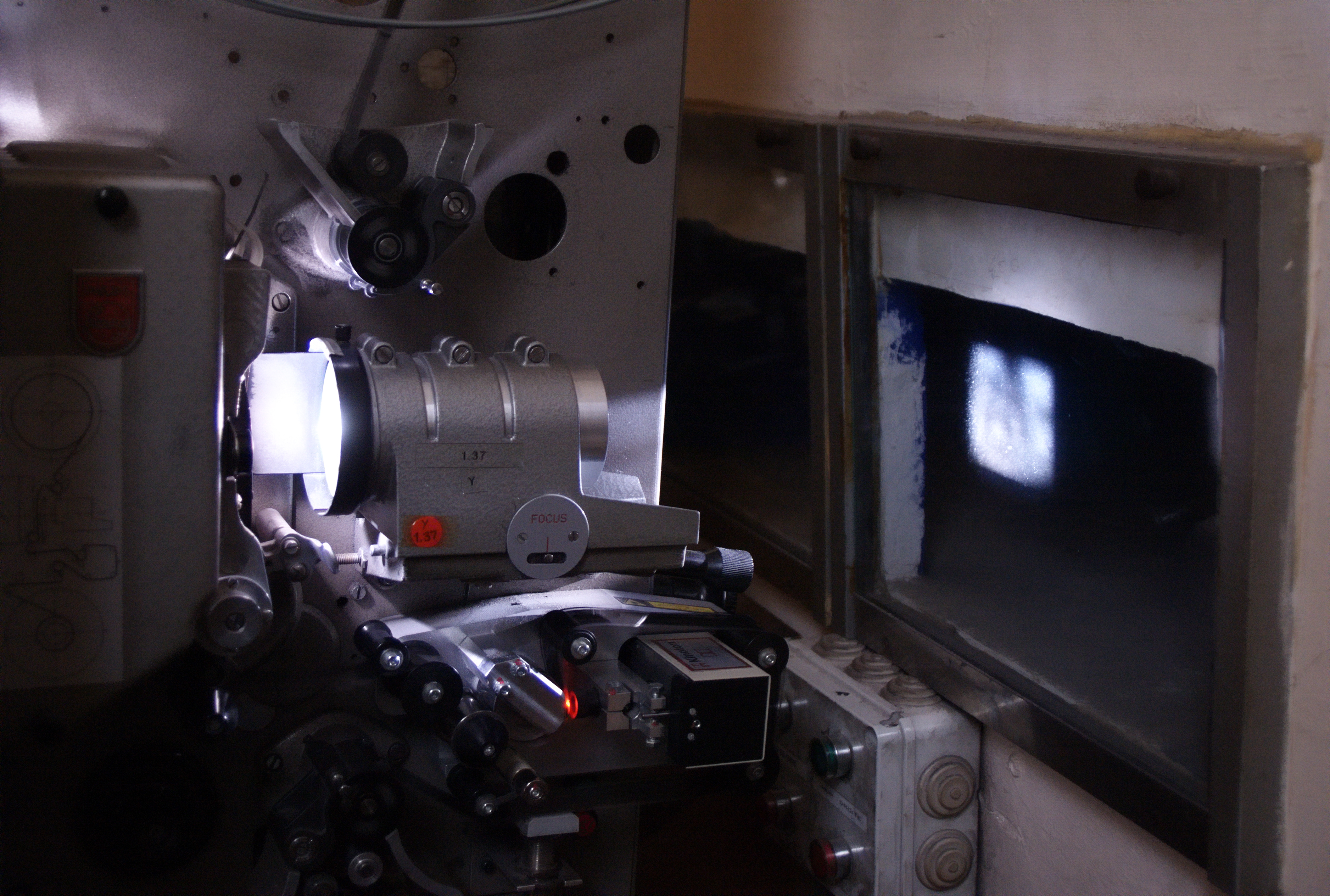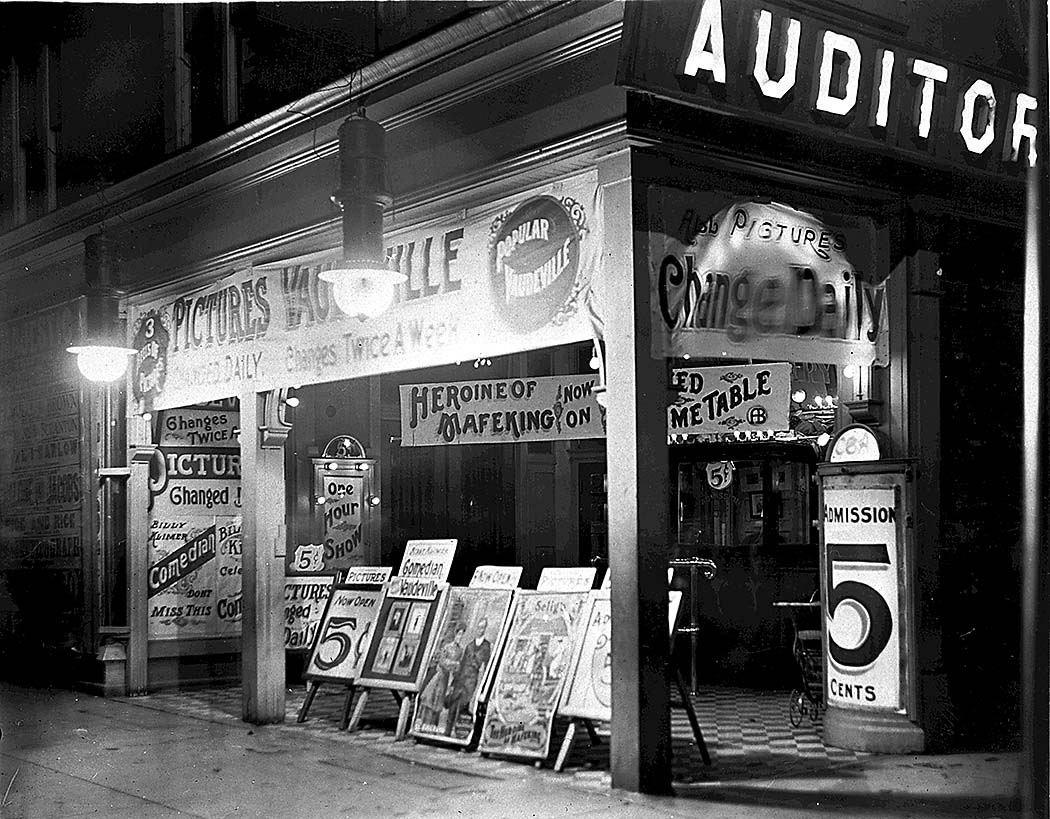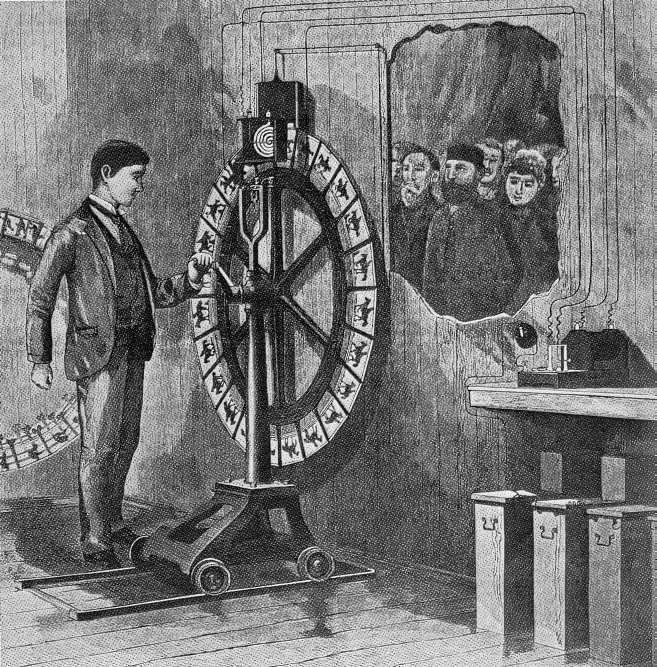|
Cinematographe
Cinematograph or kinematograph is an early term for several types of motion picture film mechanisms. The name was used for movie cameras as well as film projectors, or for complete systems that also provided means to print films (such as the Cinématographe Lumière). History A device by this name was invented and patented as the "Cinématographe Léon Bouly" by French inventor Léon Bouly on February 12, 1892. Bouly coined the term "cinematograph," from the Greek for "writing in movement."Abel, Richard. Encyclopedia of Early Cinema. 1st ed. London: Routledge, 2004. Due to a lack of money, Bouly could not develop his ideas properly and maintain his patent fees, so the Lumière brothers were free to adopt the name. In 1895, they applied it to a device that was mostly their own invention. The Lumière brothers made their first film, '' Workers Leaving the Lumière Factory'' (''Sortie de l'usine Lumière de Lyon''), that same year. The first commercial, public screening of cinem ... [...More Info...] [...Related Items...] OR: [Wikipedia] [Google] [Baidu] |
Cinematography
Cinematography (from ancient Greek κίνημα, ''kìnema'' "movement" and γράφειν, ''gràphein'' "to write") is the art of Film, motion picture (and more recently, electronic video camera) photography. Cinematographers use a lens (optics), lens to focus reflected light from objects into a real image that is transferred to some image sensor or film, light-sensitive material inside a movie camera. These Exposure (photography), exposures are created sequentially and preserved for later processing and viewing as a motion picture. Capturing images with an electronic image sensor produces an Charge-coupled device, electrical charge for each pixel in the image, which is Video processing, electronically processed and stored in a video file for subsequent processing or display. Images captured with photographic emulsion result in a series of invisible latent images on the film stock, which are chemically "Photographic developer, developed" into a Positive (photography), visibl ... [...More Info...] [...Related Items...] OR: [Wikipedia] [Google] [Baidu] |
Auguste And Louis Lumière
The Lumière brothers (, ; ), Auguste Lumière, Auguste Marie Louis Nicolas Lumière (19 October 1862 – 10 April 1954) and Louis Lumière, Louis Jean Lumière (5 October 1864 – 6 June 1948), were French manufacturers of photography equipment, best known for their cinematograph, ''Cinématographe'' motion picture system and the short films they produced between 1895 and 1905, which places them among the earliest filmmakers. Their screening of a single film on 22 March 1895 for around 200 members of the "Society for the Development of the National Industry" in Paris was probably the first presentation of Movie projector, projected film. Their first commercial public screening on 28 December 1895 for around 40 paying visitors and invited relations has traditionally been regarded as the birth of cinema. Either the techniques or the business models of earlier filmmakers proved to be less viable than the breakthrough presentations of the Lumières. History The Lumière brothers ... [...More Info...] [...Related Items...] OR: [Wikipedia] [Google] [Baidu] |
Motion-picture
A film also called a movie, motion picture, moving picture, picture, photoplay or (slang) flick is a work of visual art that simulates experiences and otherwise communicates ideas, stories, perceptions, feelings, beauty, or atmosphere through the use of moving images. These images are generally accompanied by sound and, more rarely, other sensory stimulations. The word "cinema", short for cinematography, is often used to refer to filmmaking and the film industry, and to the art form that is the result of it. Recording and transmission of film The moving images of a film are created by photographing actual scenes with a motion-picture camera, by photographing drawings or miniature models using traditional animation techniques, by means of CGI and computer animation, or by a combination of some or all of these techniques, and other visual effects. Before the introduction of digital production, series of still images were recorded on a strip of chemically sensitize ... [...More Info...] [...Related Items...] OR: [Wikipedia] [Google] [Baidu] |
Movie Projector
A movie projector is an opto- mechanical device for displaying motion picture film by projecting it onto a screen. Most of the optical and mechanical elements, except for the illumination and sound devices, are present in movie cameras. Modern movie projectors are specially built video projectors. (see also digital cinema) Many projectors are specific to a particular film gauge and not all movie projectors are film projectors since the use of film is required. Predecessors The main precursor to the movie projector was the magic lantern. In its most common setup it had a concave mirror behind a light source to help direct as much light as possible through a painted glass picture slide and a lens, out of the lantern onto a screen. Simple mechanics to have the painted images moving were probably implemented since Christiaan Huygens introduced the apparatus around 1659. Initially candles and oil lamps were used, but other light sources, such as the argand lamp and limelig ... [...More Info...] [...Related Items...] OR: [Wikipedia] [Google] [Baidu] |
Film
A film also called a movie, motion picture, moving picture, picture, photoplay or (slang) flick is a work of visual art that simulates experiences and otherwise communicates ideas, stories, perceptions, feelings, beauty, or atmosphere through the use of moving images. These images are generally accompanied by sound and, more rarely, other sensory stimulations. The word "cinema", short for cinematography, is often used to refer to filmmaking and the film industry, and to the art form that is the result of it. Recording and transmission of film The moving images of a film are created by photographing actual scenes with a motion-picture camera, by photographing drawings or miniature models using traditional animation techniques, by means of CGI and computer animation, or by a combination of some or all of these techniques, and other visual effects. Before the introduction of digital production, series of still images were recorded on a strip of chemically sens ... [...More Info...] [...Related Items...] OR: [Wikipedia] [Google] [Baidu] |
Bioscop
The Bioscop is a movie projector developed in 1895 by German inventors and filmmakers Max Skladanowsky and his brother Emil Skladanowsky (1866–1945). History The Bioscop used two loops of 54-mm films without a side perforation. This caused poor control of the film-transport through the projector and might have contributed to the more successful development of the cinematograph by the French brothers Lumiere. The first public performance of the movie scenes using the Bioscop was organized in the restaurant Feldschlößchen in Berlin-Pankow, Berliner Straße 27. Three of the scenes became iconic for early cinematography: '' Boxing Kangaroo'', ''The Wrestler'' and '' The Serpentine Dancer''. They were all shot earlier in the garden of the same restaurant. The ballroom of the Felschlößchen restaurant was later converted into the first permanent cinema in Germany and served the audience under the name Tivoli until it was closed in 1994 and demolished to make space for a disco ... [...More Info...] [...Related Items...] OR: [Wikipedia] [Google] [Baidu] |
Viewfinder
In photography, a viewfinder is what the photographer looks through to compose, and, in many cases, to focus the picture. Most viewfinders are separate, and suffer parallax, while the single-lens reflex camera lets the viewfinder use the main optical system. Viewfinders are used in many cameras of different types: still and movie, film, analog and digital. A zoom camera usually zooms its finder in sync with its lens, one exception being rangefinder cameras. History Before the development of microelectronics and electronic display devices, only optical viewfinders existed. Direct optical viewfinders Direct viewfinders are essentially miniature Galilean telescopes; the viewer's eye was placed at the back, and the scene viewed through the viewfinder optics. A declining minority of point and shoot cameras use them. Parallax error results from the viewfinder being offset from the lens axis, to point above and usually to one side of the lens. The error varies with distance, bei ... [...More Info...] [...Related Items...] OR: [Wikipedia] [Google] [Baidu] |
Condenser (optics)
A condenser is an optical lens which renders a divergent beam from a point source into a parallel or converging beam to illuminate an object. Condensers are an essential part of any imaging device, such as microscopes, enlargers, slide projectors, and telescopes. The concept is applicable to all kinds of radiation undergoing optical transformation, such as electrons in electron microscopy, neutron radiation and synchrotron radiation optics. Microscope condenser Condensers are located above the light source and under the sample in an upright microscope, and above the stage and below the light source in an inverted microscope. They act to gather light from the microscope's light source and concentrate it into a cone of light that illuminates the specimen. The aperture and angle of the light cone must be adjusted (via the size of the diaphragm) for each different objective lens with different numerical apertures. Condensers typically consist of a variable-aperture diaphragm and ... [...More Info...] [...Related Items...] OR: [Wikipedia] [Google] [Baidu] |
Nickelodeon (movie Theater)
The Nickelodeon was the first type of indoor exhibition space dedicated to showing projected motion pictures in the United States and Canada. Usually set up in converted storefronts, these small, simple theaters charged five cents for admission and flourished from about 1905 to 1915. Etymology "Nickelodeon" was concocted from ''nickel'', the name of the U.S. five-cent coin, and the ancient Greek word ''odeion'', a roofed-over theater, the latter indirectly by way of the '' Odéon'' in Paris, emblematic of a very large and luxurious theater, much as the ''Ritz'' was of a grand hotel. In spite of this derivation, the word has also been used since at least 1925 to refer to coin-operated player pianos and jukeboxes. One later instance of this use is the 1949 popular song " Music! Music! Music!" ("Put another nickel in, in the nickelodeon…"). History The earliest films had been shown in "peep show" machines or projected in vaudeville theaters as one of the otherwise live acts. ... [...More Info...] [...Related Items...] OR: [Wikipedia] [Google] [Baidu] |
Vaudeville
Vaudeville (; ) is a theatrical genre of variety entertainment born in France at the end of the 19th century. A vaudeville was originally a comedy without psychological or moral intentions, based on a comical situation: a dramatic composition or light poetry, interspersed with songs or ballets. It became popular in the United States and Canada from the early 1880s until the early 1930s, but the idea of vaudeville's theatre changed radically from its French antecedent. In some ways analogous to music hall from Victorian Britain, a typical North American vaudeville performance was made up of a series of separate, unrelated acts grouped together on a common bill. Types of acts have included popular and classical musicians, singers, dancers, comedians, trained animals, magicians, ventriloquists, strongmen, female and male impersonators, acrobats, clowns, illustrated songs, jugglers, one-act plays or scenes from plays, athletes, lecturing celebrities, minstrels, a ... [...More Info...] [...Related Items...] OR: [Wikipedia] [Google] [Baidu] |
Electrotachyscope
The Elektrischen Schnellseher (literally "Electrical Quick-Viewer") or Electrotachyscope was an early motion picture system developed by chronophotographer Ottomar Anschütz between 1886 and 1894. He made at least seven different versions of the machine, including a projector, a peep-box viewer and several versions with illuminated glass photographs on a rotating wheel viewed on a 12.5 cm wide milk-glass screen by up to seven people at the same time. History Before working on chronophotography and motion pictures, Anschütz had already received much acclaim for his instantaneous pictures of flying storks in 1884. In 1885, Anschütz made his first chronophotographs of horses, sponsored by the Prussian minister of Culture. Initially, he used 12 cameras, later on 24. The quality of his pictures was generally regarded to be much higher than that of pioneer Eadweard Muybridge's chronophotographic series. He continued with studies of horses in motion at the Königlichen Militä ... [...More Info...] [...Related Items...] OR: [Wikipedia] [Google] [Baidu] |
American Mutoscope And Biograph Company
The Biograph Company, also known as the American Mutoscope and Biograph Company, was a motion picture company founded in 1895 and active until 1916. It was the first company in the United States devoted entirely to film production and exhibition, and for two decades was one of the most prolific, releasing over 3000 short films and 12 feature films. During the height of silent film as a medium, Biograph was America's most prominent film studio and one of the most respected and influential studios worldwide, only rivaled by Germany's UFA, Sweden's Svensk Filmindustri and France's Pathé. The company was home to pioneering director D. W. Griffith and such actors as Mary Pickford, Lillian Gish, and Lionel Barrymore. Founding The company was started by William Kennedy Dickson, an inventor at Thomas Edison's laboratory who helped pioneer the technology of capturing moving images on film. Dickson left Edison in April 1895, joining with inventors Herman Casler, Henry Marvin a ... [...More Info...] [...Related Items...] OR: [Wikipedia] [Google] [Baidu] |









